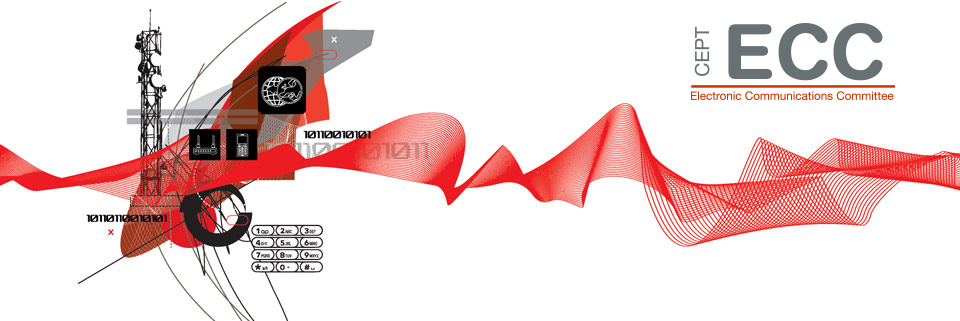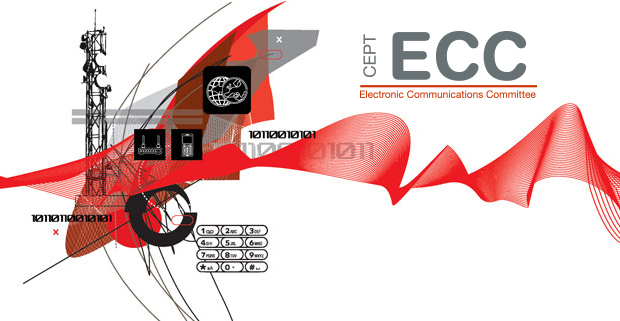ECC develops technical proposals for new innovative millimetre wave security scanners
Millimetre wave scanners are making it easier to detect security breaches at airports and other public buildings but spectrum regulation has to be updated to accommodate them, writes Robin Donoghue, ECO Spectrum Expert
This summer, as millions of people travelled through airports in Europe on their holidays, they would have had to go through airport security. New technologies have taken the ability of security scanners further than ever before: new millimetre wave security scanners can detect metallic and non-metallic objects concealed inside or beneath clothing.
A security scanner is a device that detects objects on a person's body for security screening purposes, without making any physical contact. Modern scanners can be deployed as an early warning of concealed weapons, operating at a larger distance of up to 15 m, covering up to 400 m3 and could therefore be installed in locations such as entrances or public walkways in airports.
Millimetre wave security scanners detect objects underneath a person’s clothing. However millimeter waves don’t penetrate the body as they are mainly reflected by the surface of the skin. Typical uses for this technology include detection of items for commercial loss prevention, detection of smuggling, and screening at government buildings, as well as airport security checkpoints.
The security scanners that are currently used in airport security checkpoints are typically short range. In February 2020, the ECC received a draft System Reference Document (SRdoc) from ETSI. Known as TR 103 664, the document proposed to place security scanners within the frequency range 60-90 GHz. Essentially, this document describes the system and technology and the relevant technical information. It proposes to update the spectrum regulation to accommodate two types of systems:
Indoor use at 68-82 GHz, with the power limit of 10 dBm peak EIRP in the direction of main radiation, and -30 dBm/MHz mean EIRP in the direction of main radiation. The bandwidth required is up to 10 GHz.
Indoor and outdoor use at 71-75 GHz with a power limit of 20 dBm peak EIRP in the direction of main radiation, and -23 dBm/MHz mean EIRP in the direction of main radiation. The bandwidth required is up to 4 GHz.
Airports are not the only place these millimetre wave security scanners can be used. As well as airport terminals, the SRdoc suggests they could be used at:
central transportation centres;
major shopping centres;
stadiums, concert halls, museum and major sport sites and events;
government offices/major court houses/correction facilities;
education - universities, colleges and schools;
VIP offices and visiting sites.
The SRdoc also suggested that millimetre wave security scanners be included in the ERC Recommendation 70-03, relating to the use of short range devices. Specifically, they would be included under Annex 6: Radiodetermination Applications.
The ECC considered the request and initiated the relevant coexistence studies, which resulted in the draft ECC Report 344 on "Sharing and compatibility studies of Security Scanners (SScs) within the frequency range 60-82 GHz" currently under public consultation. The report looked at two main different types of millimetre wave security scanner: A "Continuous Wave" scanner and a "Burst of Chirps" scanner.
The draft ECC Report 344 identified the services and applications that could potentially be affected by the introduction of millimetre wave security scanners, namely fixed service, automotive radar and amateur and amateur-satellite service. Of these, the fixed service is typically used for transmitting vast amounts of data with applications including, the connections between mobile phone base-stations, or private networks such as connections between financial services hubs – for example, City of London, Frankfurt or Zurich. Automotive radars are sensors built into modern vehicles to enable certain driver assistant features such as automatic cruise control and emergency breaking. The amateur (4mm band) service is currently largely used for research and experimentation.
The studies in draft ECC Report 344 concluded that the indoor use of the Continuous Wave security scanner shows no risk of interference when operating with a peak EIRP of 19 dBm in the 69.89 GHz to 79.89 GHz frequency band with a peak EIRP of 7 dBm. Therefore, this meets the requirement for an allocation of up to 10 GHz for indoor use, albeit with a slightly reduced maximum power from that requested in the SRdoc.
The studies also concluded that for either type of security scanner, for both indoor and outdoor operation, no harmful interference is caused towards the fixed service when operating in the band 76.5-80.5 GHz, where 23 dB of out-of-band attenuation can be assumed. It also concluded that although there may potentially be a risk of interference to automotive radar in this frequency band when only the coupling loss is considered, in practice however, this would be mitigated were the timing of the transmit signals considered. The ECC Report 344 concluded there was no risk to the amateur service in the band 76.5-80.5 GHz. Therefore, this meets the requirement for an allocation of up to 4 GHz for indoor and outdoor use, albeit with a slightly reduced maximum power of 19 dBm, from that requested in the SRdoc.
The draft ECC Report is due to be published in October, taking into account the results of the public consultation. It is also expected that new activities will be undertaken in the ECC, in particular, to develop new regulations permitting the use of this new innovative millimetre wave security scanner technology.



